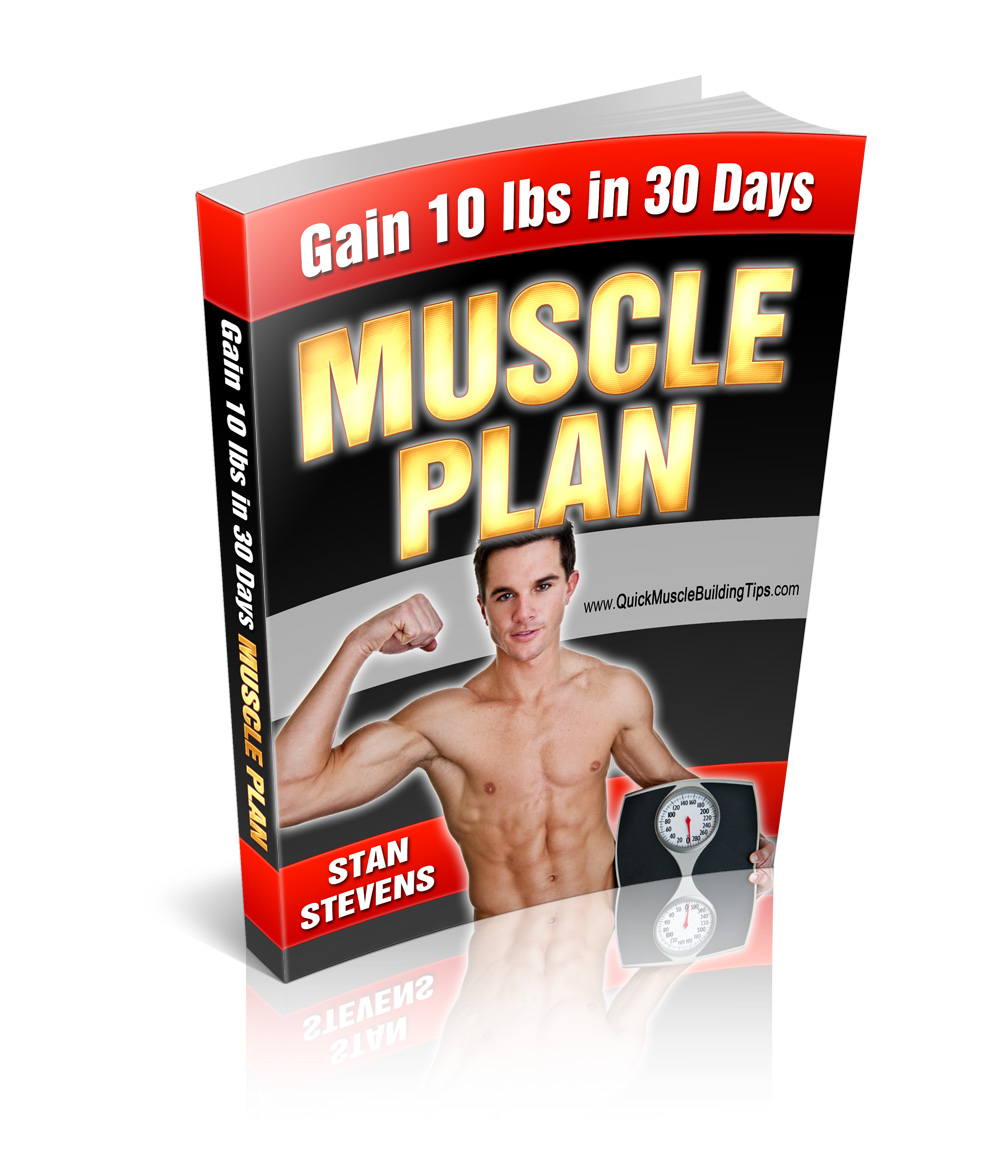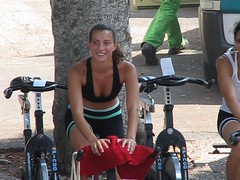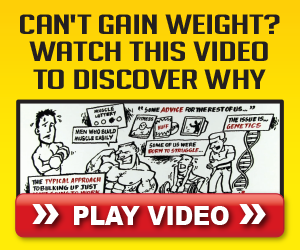Everyone has heard them- the clichés and myths associated with exercising. For the most part, these myths are a result of our drive to find an easier way to do something- or fitness shortcuts. We want to believe that there is some secret to it, or trick that will minimize our effort while maximizing the results we see. What makes someone truly successful is the ability to sort through the fake misconceptions to find the truths about training and fitness. Knowing what is right and what is wrong will make a world of difference when you are designing your exercise and health improvement program. Check out this list of some of the most common, and hated amongst trainers and weight loss experts, myths out there.
—-
10) Your cardio machine is counting the calories you’re burning.
“It doesn’t mean anything,” said Mark Macdonald, personal trainer and author of “Body Confidence” about the calorie numbers spit out by the cardio machine.
Some machines don’t even ask for your weight or sex.
“It’s not asking your body composition,” he said. “If you’re at 18% body fat, you’re going to burn a lot more than if you’re female at 35% body fat.”
And how many people know their body fat percentage?
The number calculated by your machine is likely not accurate.
9) Women shouldn’t lift weights because it’ll make them bulky.
This one drives Alice Burron, a former female bodybuilder, crazy. She would spend four to five hours a day when she competed, trying to build muscles.
“You really have to overload those muscles to create bulk,” said Burron. “It’s very, very difficult.”
Women have too much estrogen to build large amounts of bulk. Guys build muscles faster because they have testosterone.
So ladies, don’t fear the barbells. Strength training helps decrease body fat, increase lean muscle mass and burn calories more efficiently.
The government’s 2008 Physical Activity Guidelines for Americans recommended muscle-strengthening physical activity on at least three days of the week for kids and two or more for adults.
8) Heart rate monitors will let you know how hard you’re working.
Heart rate monitoring is a flawed science.
The better detector of how hard you’re working is not the newest, gee-whiz tech device, but your own body.
“The perceived exertion, your own sense of how hard you’re working is a much more reliable of exercise intensity,” said Matt Fitzgerald, senior editor of Competitor group.
Perceived exertion means it’s your estimation of how hard you are working out and surprisingly, it’s very accurate, he said.
“Your perception of your limit can change over time. So yeah, even your own perception isn’t perfect. It’s still better than heart rate monitor,” Fitzgerald said.
Heart rates could falter depending on what kind of exercise you’re doing.
The talk test can measure how intensely you’re working out depending on whether you can talk in full sentences, short phrases or if you’re barely able to muster a few words.
“It’s best to learn to recognize your body’s signals and get a better control of your effort,” said Alex Hutchinson, author of “Which Comes First: Cardio or Weights.”
7) Your weight is the end all, be all.
Newbies hit the gym, and then weigh themselves every day on the scale.
Week-after-week, they see nodownward trend on the scale and get impatient.
People starting saying, “I haven’t lost any weight. This is pointless, I’m not accomplishing anything,” said Hutchinson.
After a few months of increased exercise, they are healthier because they’ve reduced risk factors such as blood sugar levels. Even though a person may not be losing weight, his health has improved in ways that might not be measured.
6) Low-intensity exercise burns more fat.
In general, low intensity exercise has its place — it’s less stressful on joints.
The myth is that if you exercise too intensely, you end up burning carbohydrates instead of fat.
It’s the most dangerous type of myth because there’s a kernel of truth in it, Hutchinson said.
The more intensely you exercise, the higher proportion of carbs you burn. You may burn less fat, but the total amount of calories burned is higher and that is the bigger picture.
When your body has burned up all the carbs, it starts burning fat.
“You can ignore zones and pay attention to how many calories you burn, which ultimately determines how much body fat you’re going to lose,” Fitzgerald said.
5) Chug a protein shake after workout.
“It’s eating another meal,” said Macdonald, a personal trainer who helped TV host Chelsea Handler get in shape.
Protein shakes, powders and bars are good for emergencies, but “they’re the lowest quality food.”
“You’re better off eating real food,” he said.
The products are more processed. The best way to get protein is through foods such as a turkey sandwich, Greek yogurt with nuts and fruit.
Martin Gibala, chairman of the department of kinesiology at McMaster University in Hamilton, Ontario, agrees.
“Protein sources in real food are Number 1. Cheaper and real food may provide other benefits, vitamins and minerals.
And some of the components in food may act synergistically in ways we don’t understand.”
“When we isolate the compound we think works, it’s not as good as the real foods.”
4) You can spot reduce for tight abs or toned arms.
You may have crunched in vain.
You won’t see muscle definition or a nice six-pack despite how many crunches you do, because of the layer of fat resting on top of your muscles.
“Don’t focus on a body part. Try to get them all,” said Burron, a spokeswoman for the American Council on Exercise.
“You might have beautiful triceps — it may not be flopping all over the place. Until the fat is gone, most people wouldn’t know it’s there.”
3) As long as I go to the gym 30-45 minutes, that gives me a pass to do what I want for rest of the day.
The gym doesn’t negate a bad diet.
Also, emerging research suggests that if you’re sedentary most of the day, it may not matter how hard or often you exercise.
People who spend more time sitting during their leisure time have an increased risk of death, regardless of daily exercise.
Sitting for hours can shave years off life
In a study of more than 123,000 healthy people, the American Cancer Society found that women who spent more than six hours a day sitting were 40 percent more likely to die sooner than women who sat less. Men who sat more had 20 percent increased risk of death.
Essentially, those who sit less, live a longer life than those who don’t.
2) No pain, no gain.
“The ongoing perception is that people need to feel pain through the entirety of their workout or they’re not getting the benefit — that one’s very frustrating to me,” said Burron, a personal trainer. “You shouldn’t be exercising at a level of pain ever.”
Feeling discomfort during a workout is OK.
“If it’s so intense you’re thinking of passing out, you can’t continue this session for longer, then it’s too difficult and you’re at increased risk for injuries or burnout,” Burron said.
“You want to exercise smarter, not harder,” she added. “That’s the premise. You don’t have to kill yourself. You just have to be smart about it.”
1) Stretching will help prevent injuries.
A growing number of studies challenge the entrenched assumption that stretching helps prevent injuries.
“The way we were taught to stretch, to try to touch your toes — there’s little evidence it prevents injuries,” Hutchinson said.
A review published in 2007 of 10 randomized studies about stretching after or before physical activity found that “muscle stretching does not reduce delayed-onset muscle soreness in young healthy adults.”
Static stretching is when you stay in place, bend over to touch your toes, or try to pull your ankles towards your hips.
A study presented this year at the American Academy of Orthopaedic Surgeons found that such static stretching before a run neither prevents nor causes injury.
Then a study published this month in Medicine & Science in Sports & Exercise found that static stretches that last longer than a minute could be detrimental to performance.
Athletes often swing their arms and warm up before a game. That type of dynamic stretching such as high knee jogs, walking lunges can help move your muscles through different ranges of motions.
This type of dynamic stretching is different from clutching your limbs, because it focuses on movement.
A study published in the Journal of Strength & Conditioning Research found professional soccer players who practiced dynamic stretching had higher range of motion than when they practiced only static stretches.
While toe-touches and extra flexibility might be required in gymnastics or figure skating, it’s irrelevant for more everyday activities like basketball or weightlifting.
There’s a lot of information out there about fitness, weight lifting, and strength training- unfortunately, a lot of it is untrue, or at least has false elements. Only making matters much worse, the internet helps these rumors to spread like wild fire. So, here’s the quick break down of what to put on your ignore list when it comes to exercise.
Cardio equipment measures the calories you burn- your treadmill is just guessing, so don’t its word for it. Your calories burned number is going to vary based on your gender, body composition, and even your posture.
Women get bulky if they lift weights- estrogen actually makes it very difficult for a women to bulk up, so unless you were planning on lifting weights for 4-5 hours every day, bulking up probably won’t happen.
Heart rate monitors can gauge effort- it’s a flawed science, trust your perception instead.
Your weight is what counts- this is so untrue that many of the best looking and strongest people have no idea what their number is. One pound of fat takes up a lot more space than one pound of muscle, so a skinny person can be out of shape, and a heavy person might be the picture of physical fitness.
Low intensity burns the most fat- no way, no how! While low intensity workouts have their use, mainly because they’re good for starters and people with health problems, the harder you work, the most fat you burn.
Use protein shakes after a workout- that’s pretty much like eating an extra meal! Try getting your protein from food instead, it’s a lot more satisfying. Use protein shakes and bars for emergencies only.
You can do spot reduction for certain areas- there’s no way to control which areas lose weight, only which areas gain muscle. So, work on overall weight loss and use weight training to tone areas.
Going to the gym means you can do whatever you want and still be fit- not hardly! Exercise is a part of it; actually, it’s a small part of it. Health starts with our diet, and the gym helps us to look good and maintain cardiovascular and muscle health.
No pain, no gain- you don’t have to kill yourself to see result! Discomfort and tightness can be expected, but if you hurt during or after a workout, something is wrong or you’re not doing it right.
Stretching prevents injuries- simply put, there’s virtually no evidence to back this up. Being more limber and flexible might help with balance, and it might be a good tool to get you in the right state of mind, but as far as preventing injuries- don’t count on it!
Watch this video for more information about exercise myths…
How many of these are you guilty of falling for?
|
Gain 10lbs of Muscle in 30 Days?
Grab this free Muscle Gaining Plan that includes the workout and diet plan. Just Enter Your Email Below.
|

|

|
We hate spam just as much as you
|



{ 0 comments… add one }